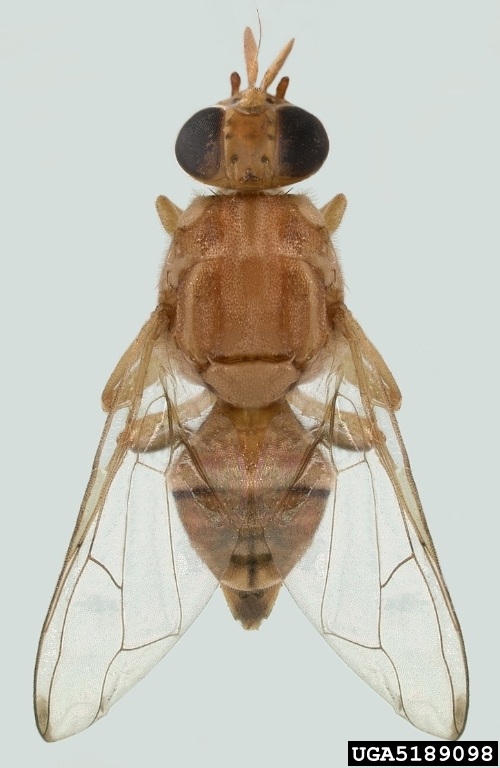Feared Peach Pest Found In California

The peach fruit fly attacks a wide variety of fruits including stone fruit, citrus, tomatoes, cucumbers, and eggplant . (Photo credit: Natasha Wright, Florida Dept. of Ag and Consumer Services, Bugwood.org)
The Fresno County (CA) Agricultural Commissioner’s office is announcing that a single male peach fruit fly has been detected, raising fears of an infestation in the San Joaquin Valley, perhaps the richest agricultural region in the world.
The pest was found on a trap that was placed in a peach tree in a yard of a residence in East Fresno. The identity was confirmed by the California Department of Food and Agriculture (CDFA) lab Friday in Sacramento.
California produces more than 90% of the nectarines and plums grown in the U.S. and provides approximately 60% of all the peaches. Most of those are grown in the San Joaquin Valley, just south of Fresno.
Peach fruit fly (Bactrocera zonata), a native of South and Southeast Asia, attacks a wide variety of fruits and is considered a serious pest to agriculture. Damage occurs when the fly larva feeds on the insides of fruits and vegetables such as: peaches and other soft stone fruit, citrus, tomatoes, cucumbers, and eggplant.
Even though it was a single peach fruit fly, the find should not be taken lightly, David Haviland, a University of California Cooperative Extension entomologist, says. Haviland, a pest management farm advisor who is based in Bakersfield, south of Fresno, said infestations of fruit flies, such as the peach fruit fly, are very serious.
“This is usually not because of the damage they have caused, but because of the damage they can cause,” he says. “If a pest like peach fruit fly were to become established throughout the San Joaquin Valley, it is estimated that the long-term damage would range in the hundreds of millions, if not billions of dollars.”
The losses add up quickly, Haviland says. Besides direct fruit losses, there are increased costs to growers for pest control, and quarantine restrictions on fresh fruits that would be imposed by many U.S. trading partners.
“For that reason there is a very active monitoring program in the San Joaquin Valley that allows government agencies to find very small populations of invasive fruit flies and get rid of them before they can become permanently established,” he says. “Those programs are responsible for the recent finds in Fresno County and those same programs will move forward with a very aggressive plan to make sure all flies within the region are eradicated.”
A single fly does not trigger a quarantine action. Delimitation trapping will occur in an 81-square-mile area around the trap location. If during the delimitation trapping 6 adults or 1 mated female are found, then a quarantine action is warranted.
Delimitation trapping has already begun; and over the next few days, nearly 500 traps will be deployed- followed by daily checks of those traps over the next two weeks.
If no additional flies are detected, then the traps will revert to bi-weekly checks for the next three life cycles, as determined by accumulated heat units.
The public’s cooperation in allowing these small traps to be placed in host trees on their property is very important to successfully locating the source of the infestation and the eradication of this potentially devastating pest. In 2006, Fresno County successfully eradicated a peach fruit fly infestation.









